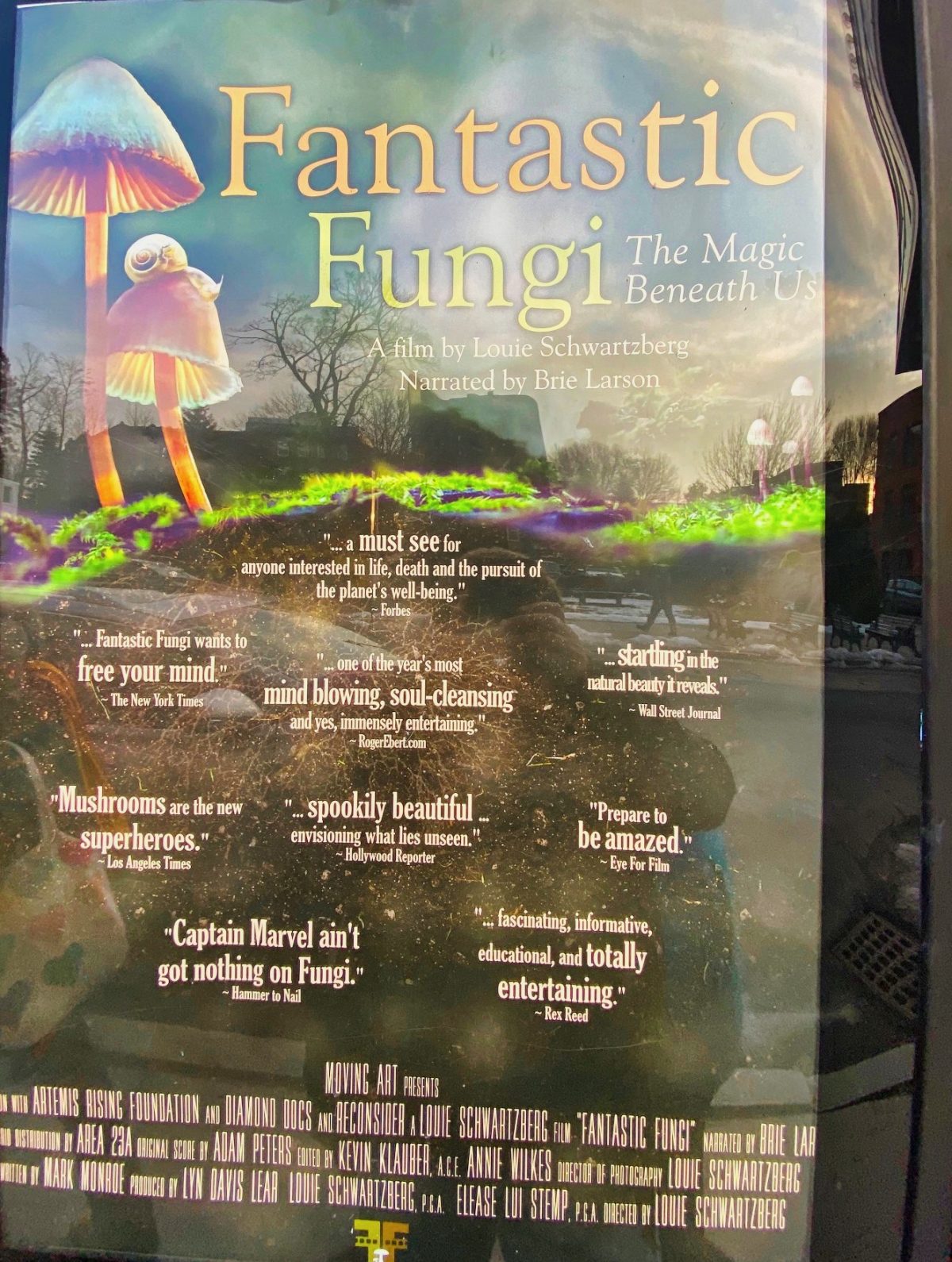Louie Schwartzberg’s surprising and kooky documentary advances the very new idea that the Magic Of Mushrooms offers nothing less than a model for saving our planet, as well as many of our lives.
This is an almost desperately welcome idea right now for people like me, who worry very much about climate change and am puzzled and frustrated by our country’s stubborn and frightening denial of it.
I could sure relish a movie advancing the idea that fungi can save our world and us. I want something to hang on to.
The movie is a lot of fun, and I enjoyed almost all of it. The story of mycelium doesn’t need any puffing up. But beware: I wasn’t convinced that the earth’s savior is here.
The movie is a photographic time-lapse journey through the magical, mostly unknown, mystical, and medicinal world of fungi and its supposed power to heal, sustain and contribute to the regeneration of life on earth, a journey that began for them 3.5 billion years ago.
The movie is at its best – entertaining and informative – when it shows us that mushrooms are just a sometimes visible part of a massive, remarkable biological structure known as mycelium, most of which lies all the way down to 300 feet below ground, and beneath all of our feet.
Mycelium is neither animal nor vegetable, but a vast network of cells that have been sharing nutrients, helping trees and plants communicate, and forming connections to almost all forms of life for all of our planetary history.
It breaks down decaying matter, transforming it into living soil, and permits trees to help one another eat and survive.
I found the movie to be delightfully odd.
In “Fantastic Fungi,” the guide to the miracle of the mushroom is the amateur but influential and successful mycologist Paul Stamets (who sports a Grateful Dead hat at one point in the film).
Helped by mesmerizing time-lapse photography, the likable Stamets takes us through the history of fungus-related science, history, and politics (you may remember the ongoing furor over psychedelic drugs, a controversy that shut down medical research into mushroom medicine for nearly two decades.)
Stamets is enthusiastic and persuasive about mycelium’s promise, not only to help sick people but to reverse and contain some of the worst effects of climate change. He says mushrooms may offer help in treating Alzheimer’s disease.
Stamets also claims it can clean up oil spills, kill termites and bedbugs, strengthen our immune system and help the terminally ill face their deaths with less anxiety and depression.
That is a pretty staggering list for the humble mushroom. I’m not suggesting any of this is not valid, but there was precious little evidence to prove that it is or to back up such a transformative series of claims for the fungi.
The mushroom is not a vegetable, human or animal, but a reproductive structure produced by fungi.
It is somewhat like the fruit of a plant, except that the “seeds” it produces are, in fact, millions of microscopic spores that form in the gills or pores underneath the mushroom’s cap.
I got a bit wary when I realized that Stamets runs a booming mushroom development and sales company that employes 100 people. He sells mushrooms all over the world.
The commercial aspect of the movie seemed evident to me but was never openly discussed or declared. This bugged me a bit. The claim that mushrooms will save our lives and our world took the movie out of whimsy and nature and education and into the realm of hype.
Stamets made some fantastic claims for fungi, and I hope they are correct.
I wish Schwartzberg made a more convincing case for them, although the story of the fungi is fascinating all by itself, without any hype.
Several cancer patients said mushroom medicine was transformative and effective for them; it raised their spirits and reduced their fear and sadness.
Stamets surprised me and troubled me by inferring, without saying, that mushroom drugs cured his mother of advanced breast cancer.
These claims made me uneasy, but they were mostly clustered at the end.
The initial story of the mushroom was delightful and cleverly done, a sometimes charming mix of science and speculation.
Actress Brie Larson narrated much of the movie; I thought her voice cutesy and distracting.
The move had a delightfully odd feel to it. I’d recommend it. But bring some detachment and perspective.

